Creating yarn out of alternative materials has become sort of a tradition here at Warped Fibers because I am always looking at ways to upcycle materials and create something unique!
If you are interested in weaving with paper but you are looking to incorporate it into your weaving practice in a more traditional way then creating paper yarn is a great idea. This allows you to create a long thin yarn that you can use as a continuous weft. This yarn can be used just like any other weft yarn and is not limited to any type of loom!
Here are the other alternative yarn tutorials that you can follow:
How to create plastic bag yarn
This page may contain affiliate links. If you purchase something through these links then I will receive a small commission – at no extra cost to you! Please read our DISCLAIMER for more info. Thanks for the support!
What you need
Paper
Scissors (not fabric scissors!) or a paper cutter
Ruler (if using scissors)
Pencil
A piece of strong scrap yarn (approximately 8 inches) I am using 8/4 cotton rug warp
Water
Drop spindle (I am using a top whorl spindle)
Niddy noddy (optional)
Choosing your paper
You can use almost any type of paper to create yarn, but the thinner the paper the better. This is because thinner paper will be more pliant and easier to spin.
Some examples of good paper to spin are:
Newspaper
Tissue paper (what I am using in this post)
Paper towels
You could also spin pages from your journals, notebook paper, or really any paper that is not too thick.
Something to keep in mind when choosing your paper for spinning is to pay attention to what is on the back of the paper. This is because when spinning your paper it exposes both the front and the back.
If you use paper this is heavily pigmented on one side and white on the other it will create a sort of swirled pattern on your yarn. This could be a really great effect that may want to exploit. If you want a paper yarn that is the same throughout, though, then you will want to make sure it is the same color on the front and the back.
You may also consider changing your colors as you go to create a self-striping yarn or one that creates a gradient as it continues. Both of these options will require different colored paper used in a specific order as you spin.
How to make paper yarn
It is important to cut your paper into strips first before attempting to spin your yarn. This will make your paper easier to work with as well as keep the finished yarn the same size throughout.
You can either cut your paper by hand with scissors or use a paper cutter to do this. The paper cutter may be a bit faster and cleaner, but if your strips are not perfectly straight it is not that big of a deal. Just try to keep them relatively consistent and you will be fine!
If you have used a drop spindle before then this process is not all that different from spinning roving into yarn. The general idea is the same.
If you have not used a drop spindle before – no worries! Here is a quick explanation (and a video following that) of how they work so that you can experiment with your paper.
A few spinning words you should know:
Spindle (drop spindle) – a rod with a weight on one end that is used to spin yarn by hand.
Whorl – the disc at the end of your spindle. Usually acts as the weight.
Leader yarn – scrap yarn that you add to your spindle to get your yarn started.
To start spinning:
Attach your leader yarn to your drop spindle by tying a double knot around the shaft. Then fold one end of your first paper strip into thirds and tie the other end of your leader yarn to your paper at this spot with a single knot.
Bring your leader yarn up to the hook by placing it in the notch on the whorl. Your leader yarn and paper should then be hooked into your hook to keep it in place while spinning.
Wet your first paper strip just enough to make it a tiny bit damp. Do not soak your paper or it will just fall apart. If it is not wet enough it will not spin easily or smoothly.
Play around with the amount of water you need to see what will work best. Keep in mind that different papers will also require different amounts of water.
I keep my water for spinning in a small dish or bowl next to me and I usually do this on top of a towel to keep my workspace from getting too wet.
Start to twist your damp paper around your leader yarn to get it started.
Normally (for fibers) you would hold your spinning material and let the drop spindle hang as it spins. Depending on your paper it may not be strong enough to withstand this. If it is then great! If not then you can instead either roll the shaft on your thigh or just keep it low while twisting the spindle manually (this is what I did and you will see it in the video below.)
This twist that is created will follow up your yarn and the paper and apply the twist to your paper.
Continue to spin your drop spindle as needed until your paper is spun to your liking. Keep the very end of your paper unspun and attach a second strip by placing them together – one on top of the other. Then fold them over each other before continuing to spin so that they “grab” onto each other. Continue spinning and the twist will transfer to the second paper and join them together.
If your paper ever breaks then you can reattach it this same way!
…and yes, your paper will probably break multiple times, but practice helps to keep this to a minimum.
Setting your paper yarn
Once your yarn is finished you have a few different options to set it and make sure it stays together. Essentially you will be applying a bit of tension to your new yarn while it dries to make sure it does not unply itself.
The easiest way to do this is by hanging it from something and applying a light weight to it. You want to make sure not to use anything too heavy so that it does not rip your new yarn before it is set.
The potential issue with this method is that it can create creases in your yarn, but it is not the end of the world and works if it is your only option.
You could also snugly wrap your yarn around the back of a chair or anything that can keep it tight while it dries. This is also a really inexpensive option but does depend on having a good place to keep the yarn in the meantime.
The traditional option is to use a niddy noddy.
This funnily named tool is the option most used by spinners who are creating a lot of yarn on a regular basis. This tool is specifically made to create a skein of yarn once it is finished setting.
There are now 2 ways to take it – either purchase the whole course at once for a discount or “create your own” course by purchasing just the parts you want! Either way, get 10% off for being a member of the Warped Community!
Weaving with paper yarn
Using paper yarn for weaving is not that different from weaving with any other yarns. Since it is spun to be one continuous piece of yarn you do not have to start and stop it as you would if using paper strips.
The biggest thing to keep in mind is that more than likely your paper yarn will only be suitable for weft.
If you remember from our post on choosing your warp yarn, the warp has to be strong. It is the yarn that is under tension as it sits on your loom. If you use yarn that is not strong enough to hold up to the tension of your loom then it will break and it will probably break often.
If you do have broken warps then you can fix them! Learn how to fix a broken warp on different looms here.
Unless your paper yarn is very strong, you will want to designate it as weft only. This will ensure you get the most out of your paper yarn and you are not constantly having to fix broken warps.
If you are interested in learning more about spinning then I really like The Complete Guide To Spinning Yarn by Brenda Gibson.
This book goes over spinning all types of materials with different spindles and spinning wheels!
Let me know what you are using your spun paper yarn for in the comments.
⇣ Love It? Share It! ⇣
You May Also Like




















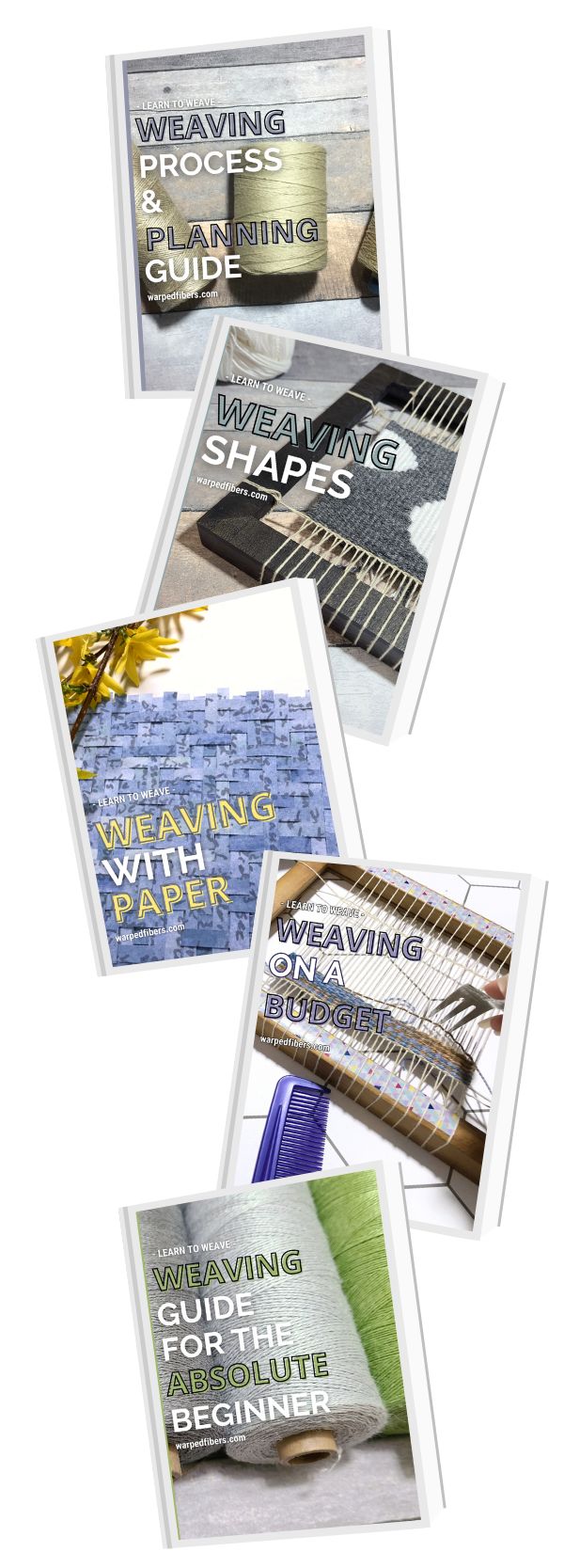
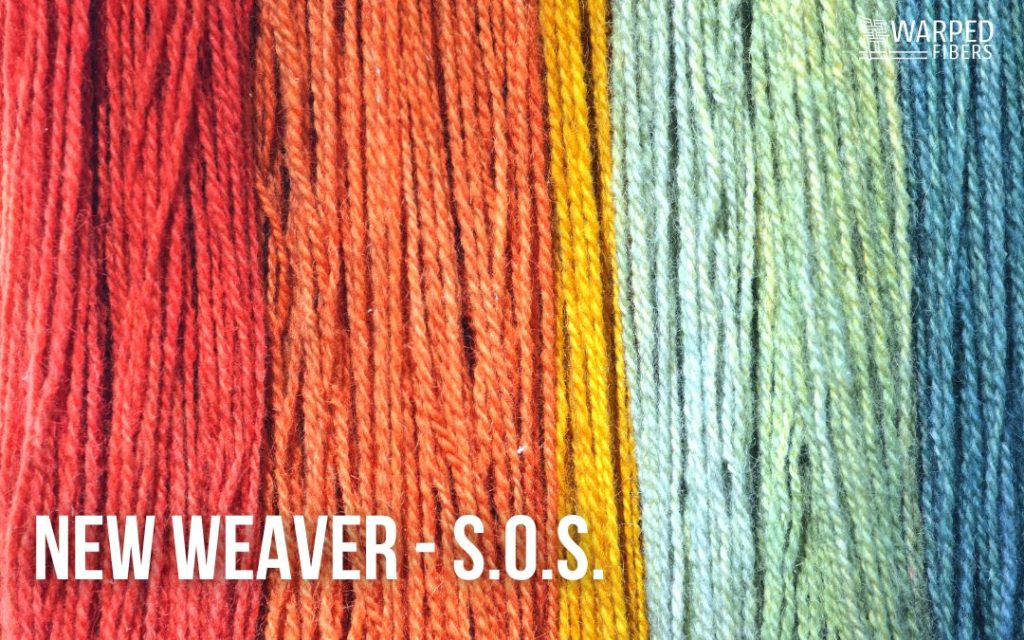

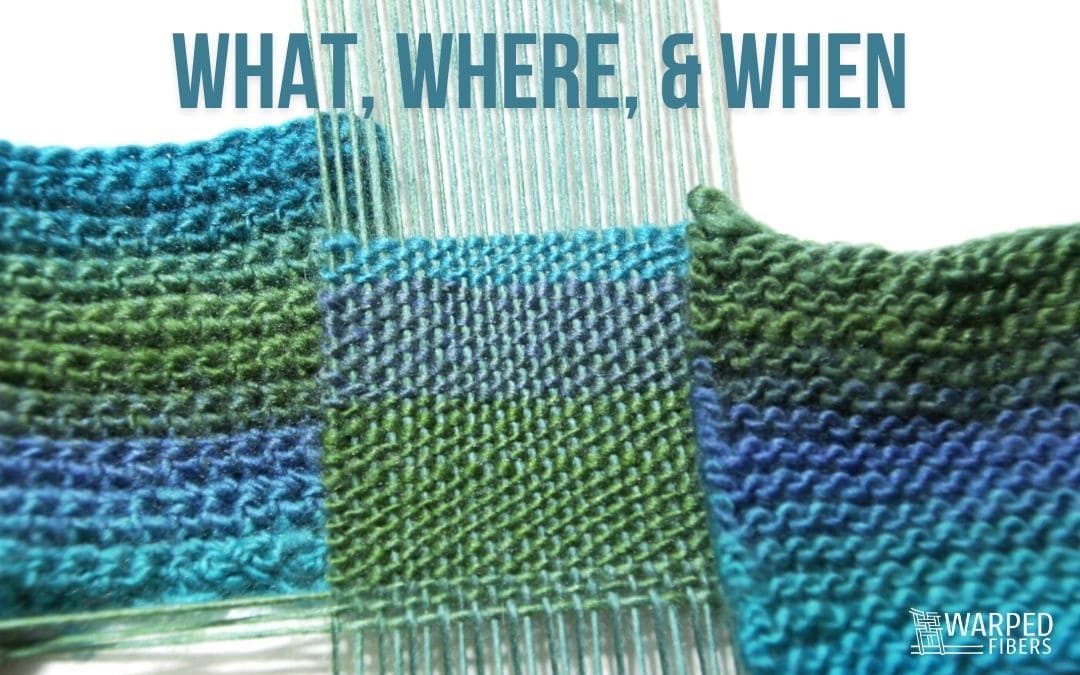

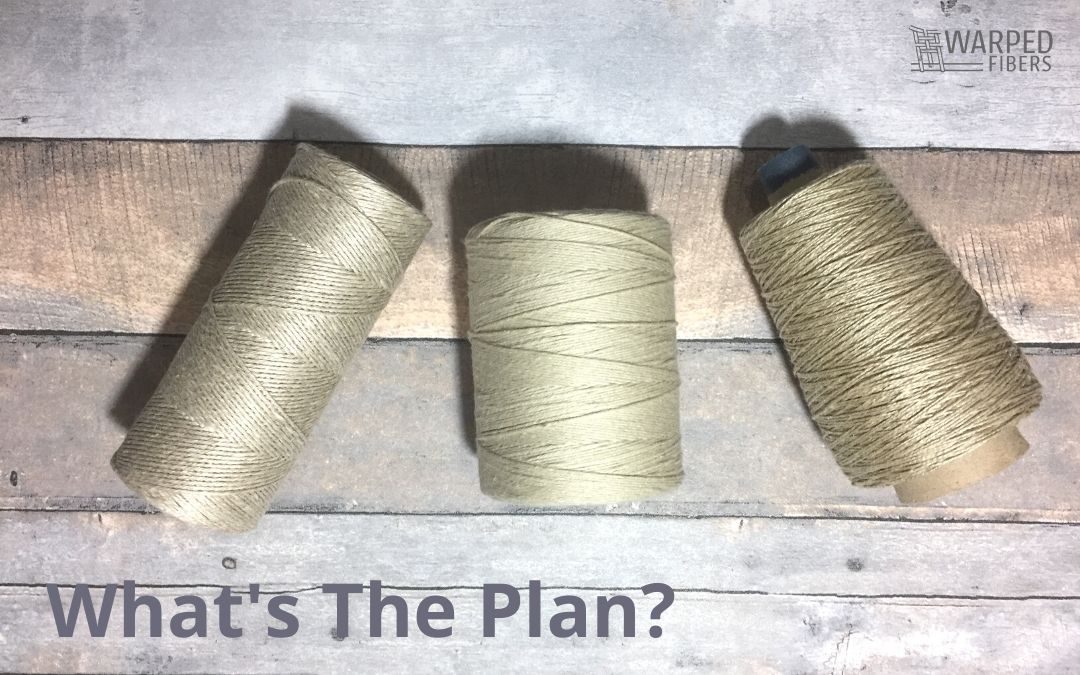

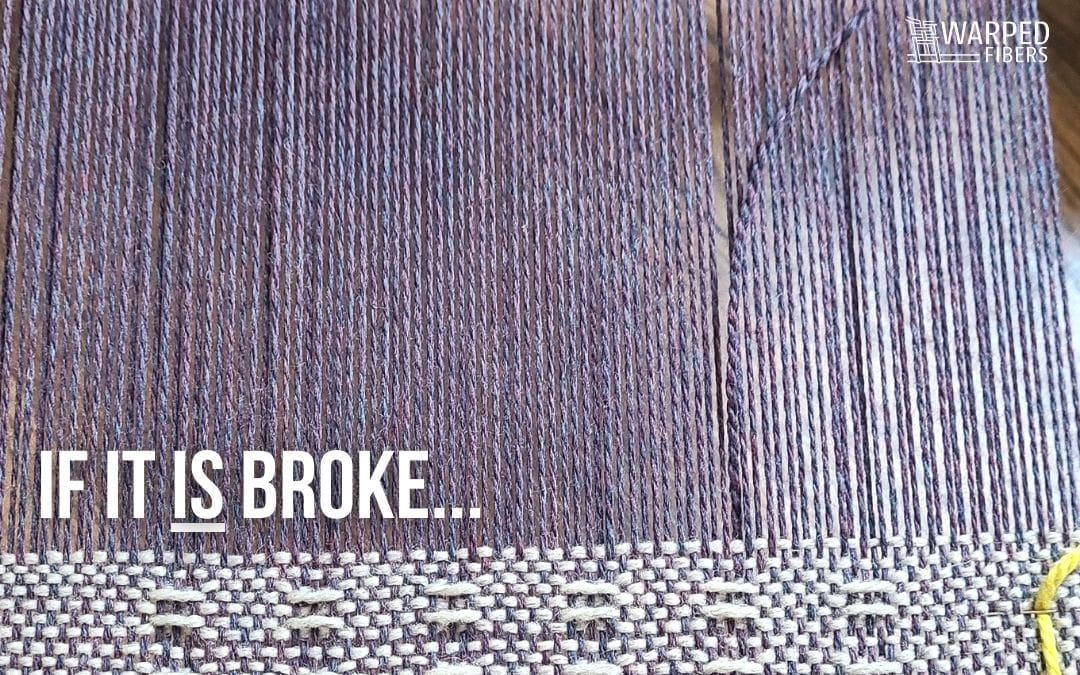

Thank you so much ! <3
You’re welcome!! ❤️
Great Tutorial.
very informative. Thanks!
So glad you found it helpful! ❤️
It looks like you cut the strips about an inch wide….??
Yes! They’re about an inch wide, but you can play around with different widths and see how your paper behaves 🙂
I love paper yarn! Sarah Swift has a tutorial on her blog for spinning paper coffee filters (stained from coffee or dyed any color). She shows how to cut them so each filter is one long strand. Since they aren’t perfectly even and have some curves, they spin into a yarn with some texture. I use a little craft spray bottle to mist the paper and wind them on rolled paper tubes to dry. Thank you for the additional info in this post. And for reminding me of how much fun it is to use paper to weave with!
That sounds like such a great idea! So glad this renewed your interest in weaving with paper 🙂